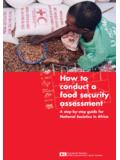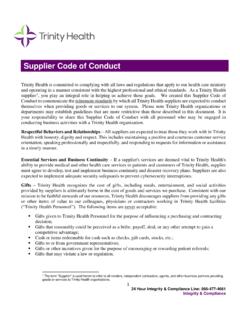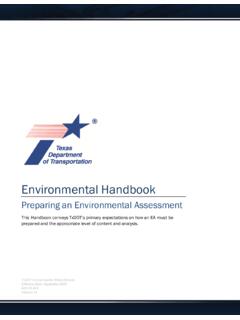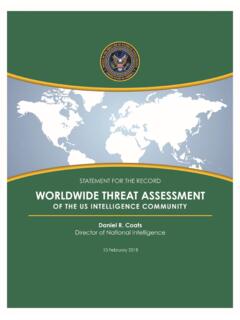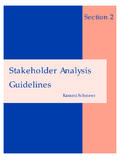Transcription of CONFLICT ANALYSIS FRAMEWORK (CAF) - World Bank
1 PLEASE DO NOT REPRODUCE OR QUOTE WITHOUT PERMISSION CONFLICT PREVENTION AND RECONSTRUCTION TEAM (CPR) SOCIAL DEVELOPMENT DEPARTMENT, World BANK CONFLICT ANALYSIS FRAMEWORK (CAF) Draft, April 11, 20051 Section I: Why CONFLICT ANALYSIS Introduction Purpose Strengthening Country Resilience to CONFLICT Other Agency CONFLICT ANALYSIS /Assessments Section II: The CONFLICT ANALYSIS FRAMEWORK Conducting CONFLICT ANALYSIS : Risk Screening Process Overview of Next Steps: Doing the ANALYSIS Methodology Operational Issues Section III: Peace and CONFLICT Impact Assessment: Work in Progress Appendices Appendix A: CONFLICT Assessments By Other Agencies Appendix B: Data Sources And Rationale For Factors In Screening Process Appendix C: Guide to Variables 1 Address questions/comments to Per Wam: and Shonali Sardesai: 1 PLEASE DO NOT REPRODUCE OR QUOTE WITHOUT PERMISSION Summary The Bank s operational policy on Development Cooperation and CONFLICT mandates the integration of sensitivity to CONFLICT in Bank assistance through analytical work, including CONFLICT ANALYSIS .
2 The CPR unit has developed a CONFLICT ANALYSIS FRAMEWORK (CAF) to help Bank teams consider factors affecting CONFLICT when contributing to strategies, policies, and programs. CONFLICT sensitive approaches that take account of problem areas and potential sources of CONFLICT may help to prevent the onset, exacerbation, or resurgence of violent CONFLICT . Working through CAF would help a team identify and analyze the key factors that impact CONFLICT and their links with poverty, to determine how they best can be addressed through Bank assistance. A first step for a team is to ascertain whether or not a country should undertake CONFLICT ANALYSIS , and for this purpose a risk screening process, which consists of nine indicators, is developed. If a team determines that CONFLICT ANALYSIS is necessary, it moves to the second stage conducting CONFLICT ANALYSIS with CAF.
3 CAF is composed of six categories of variables covering factors that have shown to affect or be affected by CONFLICT , and teams would consider the linkages of these variables to both CONFLICT and poverty for a country. In the future, CAF will also include guidelines for CONFLICT impact assessments to help anticipate the potential impact (ex ante), and assess the effects (ex post) of Bank assisted strategies or programs on CONFLICT . 2 PLEASE DO NOT REPRODUCE OR QUOTE WITHOUT PERMISSION SECTION I: WHY CONFLICT ANALYSIS Introduction CONFLICT is inherent to all societies. Differences in interests and opinions between groups are natural, but the method by which such differences are expressed and managed determine if conflicts manifest themselves in primarily political (non violent) or violent ways. When significant groups within the society (including the government) pursue their objectives through processes that are in accordance with the specific laws and established norms of the society, CONFLICT is predominantly political in Political manifestations of CONFLICT are not a subject of concern in CAF.
4 When a group turns to violence to pursue its goals, and the use of violence outweighs the use of political means, the CONFLICT is predominantly violent. Violent CONFLICT takes on a host of It is the violent CONFLICT that is of concern to poverty reduction and development, and is addressed in the CONFLICT ANALYSIS FRAMEWORK . Global events in the post-second World War era demonstrate that violent internal conflicts pose a major challenge to Moreover, with the proliferation of small arms and light weapons, and the diffusion of the international technology of destruction, it becomes even more critical to focus on violent CONFLICT . conflicts tap resources that could otherwise be used for social and economic development, thus having a negative impact on poverty. In the final ANALYSIS , it is important to prevent the occurrence, escalation, and resurgence of violent conflicts , since they constrain development, undermine poverty reduction efforts, and weaken a country s social fabric along with its physical, economic and human capital.
5 Purpose of CONFLICT ANALYSIS In accordance with OP on Development Cooperation and CONFLICT , the Bank will use its instruments to promote economic growth and poverty reduction through assistance that minimizes potential causes of CONFLICT . To achieve this, the operational policy mandates the integration of sensitivity to CONFLICT in Bank assistance through analytical work, including CONFLICT ANALYSIS . The CONFLICT ANALYSIS FRAMEWORK intends to contribute to enhancing the Bank s capacity to support country and regional efforts to analyze and address conflicts in the FRAMEWORK of poverty reduction strategies and other development strategies. This implies a recognition that the probability of success of development assistance is adversely affected without a complementary analytical FRAMEWORK identifying the sources and opportunities for outbreak and escalation of violent conflicts .
6 It also implies the recognition that poverty reduction strategies and development assistance may contribute to ameliorate as well as exacerbate underlying causes of violent CONFLICT . The purpose of CONFLICT ANALYSIS is to ensure that Bank support to a country s poverty reduction strategy and development programs enhances sensitivity to conflicts and their sources in the poverty-reducing measures, and thus reinforces a country s resilience to violent CONFLICT . 2 In some cases, the state laws themselves are structured in such a way as to promote exclusion and prevent participation, making groups feel that they have no peaceful, political alternatives, and that violence is their only option. 3 While it is difficult to determine when conflicts undergo transformation from being primarily political to being primarily violent, indicators highlighting that conflicts have turned predominantly violent include: political unrest with violent clashes on the rise; clampdown on opposition and violation of rights; lawlessness in the form of armed robberies, street crimes.
7 4 Rudolph Rummel, 1994. In the time period, 1900-1987, deaths from intra-state conflicts were million while deaths from inter-state conflicts were 34 million. 3 PLEASE DO NOT REPRODUCE OR QUOTE WITHOUT PERMISSION The purpose of CONFLICT ANALYSIS includes: examining the sources and consequences of CONFLICT ; determining the factors that can be addressed through Bank assisted strategies, and the modalities through which they can best be managed; examining a country s resilience to outbreak or escalation of violent CONFLICT , and its ability to de-escalate violent CONFLICT ; determining how resilience can be strengthened through development assistance. Strengthening Country Resilience to CONFLICT Poverty reduction and development strategies and interventions can have positive as well as negative effects on CONFLICT .
8 In a negative scenario, development interventions may (inadvertently) strengthen underlying causes of CONFLICT , the actors who are pursuing CONFLICT , and/or opportunities for violence. In a positive scenario, development interventions may contribute to weakening such factors, and help violent (or potentially violent) CONFLICT de-escalate. It is important to be aware of the limitations of development interventions in de-escalating CONFLICT and contributing to peace they can only complement, never replace, direct peace-building measures such as political transformation or preventive diplomacy. The Bank s focus on the prevention of CONFLICT emphasizes the formulation of strategies that can help countries become more resilient to the eruption and escalation of (large-scale) violence. CONFLICT resilience is understood as a situation where CONFLICT issues are dealt with through political and social processes rather than through the employment of violence.
9 It includes creating and supporting institutions in a country which allow for the management of CONFLICT in a non-violent and inclusionary manner. The key characteristics of a society resilient to violent CONFLICT include: 1. Political and social institutions which are largely inclusive, equitable, and accountable. 2. Economic, social, and ethnic diversity rather than polarization and dominance. 3. Growth and development that provide equitable benefits across the society. 4. Culture of dialogue rather than violence. Other Agency CONFLICT ANALYSIS /Assessments The Bank s increasing emphasis on CONFLICT prevention conforms with developments within other agencies (DFID, USAID, FEWER5), who see CONFLICT ANALYSIS as a key element in program development. There is an increasing consensus that developmental business as usual often exacerbate the situation, particularly in ethnically (broadly defined to include differences in religion, caste, religion, ethnicity) fragile situations.
10 Agencies have come to hold that in a situation of emerging or ongoing violent CONFLICT , assistance as usual is not enough it is important to develop a strategy which is sensitive to the CONFLICT environment, and takes into account the underlying causes of CONFLICT and how they can best be addressed. USAID, DFID and FEWER have developed frameworks that assess the level of CONFLICT risk, so that apt peace-building strategies can be formulated, and the impact of development 5 FEWER is the acronym for Forum for Early Warning and Early Response. 4 PLEASE DO NOT REPRODUCE OR QUOTE WITHOUT PERMISSION programs on the dynamics of peace and CONFLICT can be appropriately While building on prevailing work on CONFLICT ANALYSIS , CAF also includes: key variables relating to poverty and CONFLICT are identified in CAF these cover wide areas such as social and ethnic relations; governance and political institutions; human rights and security; economic structure and performance; environment and natural resources; and external factors.












